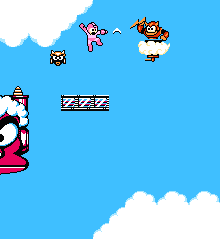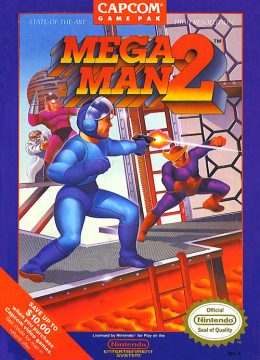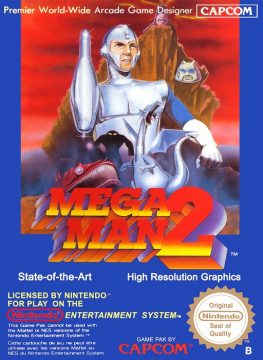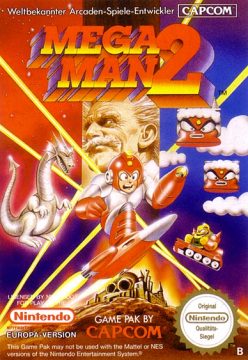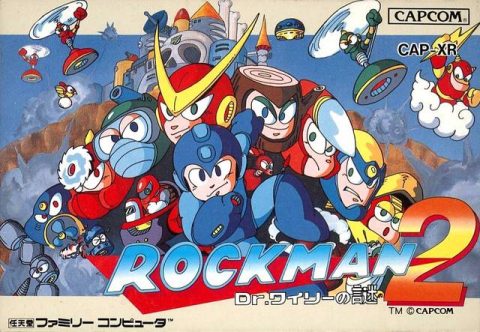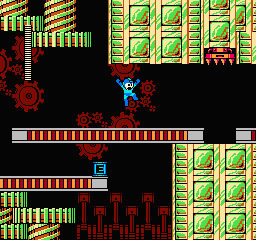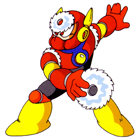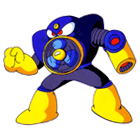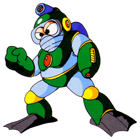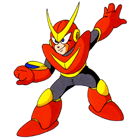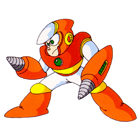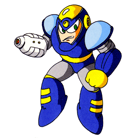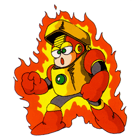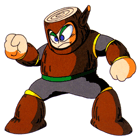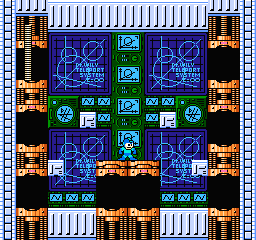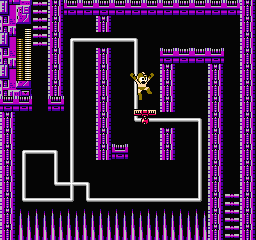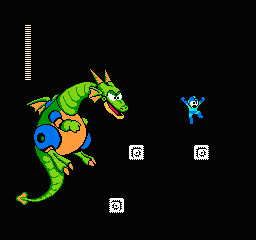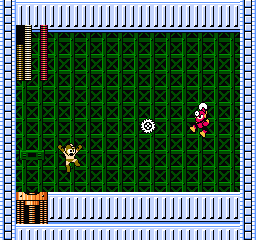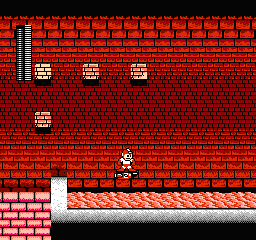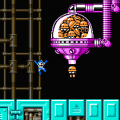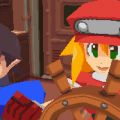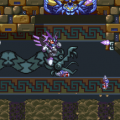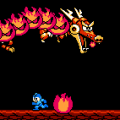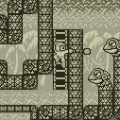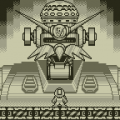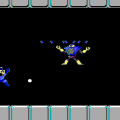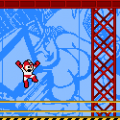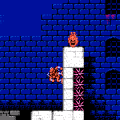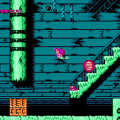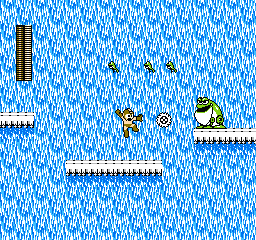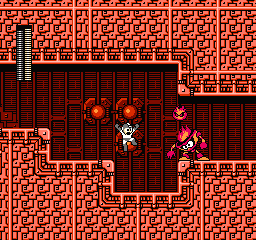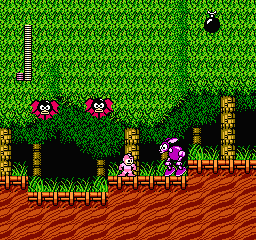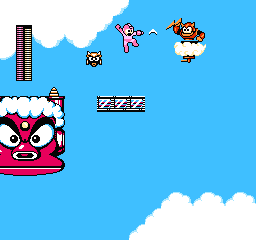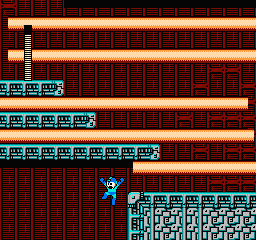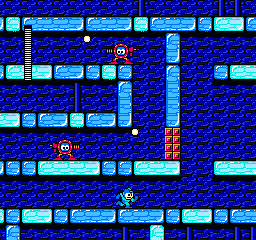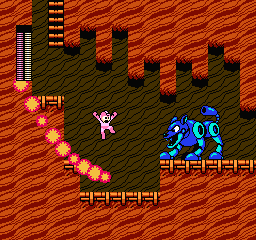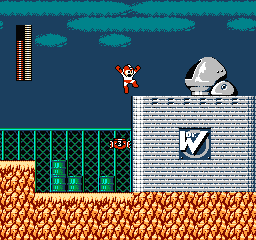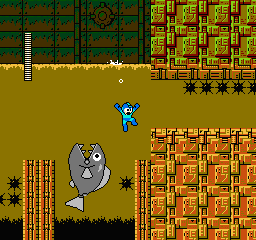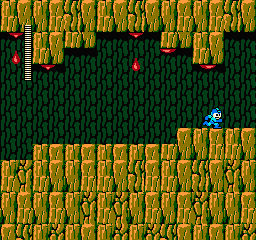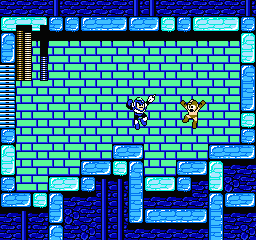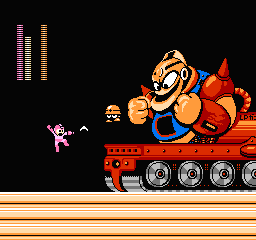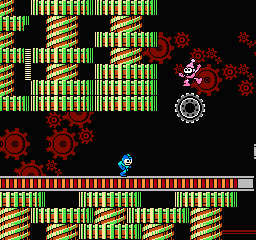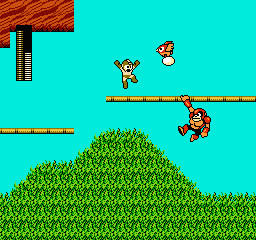- Mega Man (Series Introduction)
- Mega Man
- Mega Man 2
- Mega Man 3
- Mega Man 4
- Mega Man 5
- Mega Man 6
- Mega Man 7
- Mega Man 8
- Mega Man & Bass
- Mega Man 9
- Mega Man 10
- Mega Man 11
- Mega Man: Dr. Wily’s Revenge
- Mega Man II (Game Boy)
- Mega Man III (Game Boy)
- Mega Man IV (Game Boy)
- Mega Man V (Game Boy)
- Mega Man: The Wily Wars
- Mega Man (Game Gear)
- Rockman Complete Works
- Mega Man Anniversary Collection
- Mega Man 3 (DOS)
- Mega Man (DOS)
- Mega Man: Powered Up
- Super Adventure Rockman
- Wily & Right no RockBoard: That’s Paradise
- Mega Man Soccer
- Mega Man: The Power Battle
- Mega Man 2: The Power Fighters
- Rockman: Battle & Fighters
- Mega Man Battle & Chase
- Street Fighter x Mega Man
- Mega Man Tiger LCD Games
- Rockman & Forte (WonderSwan)
- Rockman’s IQ Challenge/Rockman Gold Empire/Rockman Strategy
- Mega Man Mobile Games / Panic Shot! Rockman
- Mega Man Unreleased Games
In retrospect, it seems funny that the first sequel of Mega Man, the one most lauded as not only the best in the classic series but one of the greatest action platformers of all time, almost never came to be. While the first title garnered enough sales to not be deemed a failure, Capcom was hesitant to develop another – a bit ironic given how much the company became later known for being very quick to dole out sequel after sequel without question.
Inafune has described how he himself had to plead to see his robo child reappear on the NES and to realize the game’s original scope. His higher-ups reached an agreement, and in between development of the home port of Legendary Wings and Professional Baseball Murder Mystery, the Mega Man staff worked on the sequel as a pet project over the course of 4 months. Capcom allowed the development on the basis that their main projects were kept on schedule, even assisting with input to balance the high difficulty of the first game and help publishing the boss design contest in Family Computer Magazine. Such public contests were common in Japanese media, allowing to grow hype and spurn awareness through public involvement. Such tactics had been used in Godzilla movies and tokusatsu action TV programs before, so why wouldn’t they work for a video game? While the plan worked with – over 8000 submissions were sent in – it left the development team with mere weeks to implement the chosen winner’s robots into the game and balance their weaponry with very little opportunity to meld their stages to their respective themes. The grueling task is stated by Inafune to be his most stressful yet most fun project ever in his career, and it shows. There is a lot of blood, sweat, tears, and love in Mega Man 2, and it’s considered one of the best sequels the video game medium has ever had.
The story this time is even simpler than the first game and can be summed up in 3 words: Wily is back. Seriously, if this game was released in the late ’90s or beyond, the title would have a generic stuck-on word at the end like “Mega Man Returns” or “Mega Man: Revenge” or “Mega Man: Resurrection”. For the late ’80s though, the plot didn’t matter too much; all that was required was the promise for more Mega Man goodness. And “more” is the right keyword. With double the memory storage came a bigger and better sequel. Right from the get-go, the intro opens scrolling up a tall building with a musical crescendo to see the hero without his helmet, standing proud against the pitch-black night sky as the new rocking theme kicks in and the title appears. It is a tingling experience that is still effective today. One press of the start button launches Mega Man to the air to segway to a stage selection menu, now loaded with 8 Robot Masters, each with a detailed mugshot.
Robot Masters
DWN-009 Metal Man
Wielder of the sawtoothed Metal Blades, one of the most over-powered special weapons Mega Man can obtain. They shoot in all 8 directions and hardly cost any energy, and only a handful of baddies and bosses are immune to them. Even Metal Man himself is weak to them! He won’t give them up without a fight though. He’s quite agile in the air and on the conveyor belts on the floor in his domain, able to fling three sawblades at a time. [Weakness: Metal Blade; Quick Boomerang]
DWN-010 Air Man
Regardless of his reputation, he’s quite beatable. He sends out tons of tiny buster-blocking tornado Air Shooters, then blows them Mega Man’s way using the giant fan in his torso. It’s a shame that his defenses blow as well, especially since he has a huge blind spot at his 6 o’clock. That’s what happens when you’re a robot built without a neck to turn your head. [Weakness: Leaf Shield]
DWN-011 Bubble Man
Yeah, he doesn’t look too tough in his scuba gear and flippers. He even looks awkward doing his little jumping swim animation since his design has a significant buoyancy flaw. He has a standard shooter that fires a quick bead, but only after launching a few bouncing slow bubbles just to annoy Mega Man or block shots. More of a threat is the row of spikes lining the ceiling of his water-filled boss chamber. Best to put him out of his misery fast and take his Bubble Lead, which rolls forward on the ground when fired. [Weakness: Metal Blade]
DWN-012 Quick Man
He’s fast! He spends most of his time leaping high and generally being a hard to hit, swift-moving target until he hits the ground, where he tends to run into walls or ridges on the elevated floor. His Quick Boomerangs are nearly as speedy as he is. They don’t deplete their energy if they come back to their wielder, which is a plus. He tends to hate having to wait on things, almost as if it hurts him… [Weakness: Time Stopper; Crash Bomber]
DWN-013 Crash Man / Clash Man
Crash Man is sort of a retake on Bomb Man, and a lot tougher to beat due to his resilient armor coating – without his weapon weakness, of course. His Crash Bombers bore into wherever they hit before exploding, able to demolish certain wall blocks found throughout the game. He also loves to jump high into the air before firing them, usually right after Mega Man fires at him with the regular P-shooter, leaving him very vulnerable to the right weapon. [Weakness: Air Shooter]
DWN-014 Flash Man
The first Robot Master with a weapon that can stop time, aptly named Time Stopper. Other than that, he’s fairly easy to take down even with the regular buster, since he only freezes Mega Man with his flashes occasionally. Later story revisions write him as the first robot Wily built that succeeded over Light’s Time Man’s ability of merely slowing everything down. [Weakness: Metal Blade]
DWN-015 Heat Man
The next fire-based Robot Master. He’s built like a big Zippo lighter that tosses Atomic Fire and zooms across the room as a ball of flame after taking a hit. He is quite capable of creating a blazing shield that can block all attacks, but seems sporting enough not to have it on throughout the entire match. His weapon is one of the first chargeable attacks in the series, working almost exactly like the Mega Buster that appeared later. [Weakness: Bubble Lead]
DWN-016 Wood Man
Constructed out of hinoki cypress, his razor-tipped Leaf Shield protects him from almost any attack. That is, until he moves, which sends the green barrier flying forward. The battle with him can get rather intense, dodging his shield and raining leaves as he closes in. He’s another one of the more popular Robot Masters around, mostly for being a robot made out of freaking wood. [Weakness: Atomic Fire]
Many of the locales in Mega Man 2 are far less grounded compared to the more normal-appearing stages of the first game, near-future setting or not. Sure, Metal Man’s factory and the watery realm of Bubble Man’s level aren’t too far out there, and a sewer-like tunnel transporting lava isn’t too far-fetched for a geothermal energy plant of tomorrow, but the robotic forest, sky platforms, yellow twisting scaffolds to the stars, crystal passages and whatever Quick Man’s stage is comprised of make for unique set pieces that stand out decades later. Wily’s base of operations is even shown on screen for the first of many iterations, looking imposing with its giant skull design befitting for a mad villain. The visuals give a somewhat darker tone than the previous outing thanks in part to the chosen tertiary palette. The bigger memory also helps remove the recycling of level segments, so each section feels unique and less padded while throwing more googly-eyed threats Mega Man’s way. Said memory spaciousness also allowed for bigger and badder robo-behemoths, which would become a future staple for mini-bosses and fortress guards. Fire-breathing blue dogs, floating oni/goblin Air Tikki platforms, and shrimp-spewing lantern fish are as large as Wily’s machine from the first game and come at least in pairs in the midst of a Robot Master stage, yet aren’t the largest enemies Mega Man has to encounter. Reaching the end of the first fortress level has him leaping from block to block in a dark room, only for a screen-filling Mecha Dragon to burst in right behind him. The 3rd fortress stage has Mega Man going toe-to-toe with an even bigger tank with Guts Man’s enlarged body mounted onto. Despite the big imposing doom bots, the biggest surprise was the fight after the new and improved Wily Machine Mk.2. The game drops players down a silent shaft for a final battle with a sprite only slightly larger than Mega Man’s: Wily in what might be his true form as an alien! (Spoiler: it’s fake.)
The first game was filled with catchy tunes, but Takashi Tateishi’s (with minor help from Matsumae) score for Mega Mman 2 is regarded as one of the greatest and most memorable soundtracks of gaming ever. It gave Mega Man his very own theme as well as the series’ unofficial secondary theme and well-remembered track “Dr. Wily Stage 1”. The entire score has been remixed, rearranged, and sampled throughout the years countless times. It’s considered by critics as the grand opus in a series acclaimed for its grandiose musical themes and leitmotifs. It’s only sad that it was released in a time when video games were still perceived as merely children’s toys, and thus the soundtrack hasn’t seen the sort of recognition as popular and highly regarded albums by Pink Floyd or John Williams. Maybe it’s because the electronica style doesn’t lend itself to a symphony orchestra as well as Final Fantasy, Zelda, or even Castlevania or the works of Akira Yamaoka. Maybe in due time…
However, as praised as this sequel is, there are still some sticky issues. A few of the special weapons are a little half-baked in practical use. Leaf Blade is the most recognized of the barrier weapons, but it instantly flings itself as a projectile at the mere touch of the d-pad, limiting its protection to times when Mega Man remains stationary or stands on moving platforms. Bubble Lead moves slow as a ground-based weapon and pops the moment it collides with a wall. The Time Stopper lacks any means to halt its power once executed, making it a lengthy but one-time use ability. Fortunately, similar special weapons in future games would fine-tune and tweak these powers to be more beneficial. Many of these weapons are overshadowed in the game by the Metal Blades. They’re fast, easy to spam, use little weapon energy, can fire in 8 directions, and are powerful against many baddies. With frequent power-up drops, the blades can easily take over as the default blaster, only switched out for the occasional enemy immune to them.
Many choke points and difficulty spikes litter the game, and are quite infamous to long-time players. The long string of disappearing blocks over a river of lava in Heat Man stage tends to halt many player’s progress until they earn the Item-2 jet to fly across with ease. The gauntlet of instant death beams in the latter half of Quick Man’s level requires fast reflexes and precision to blaze through, unless the player wastes all the Time Stopper energy. Then there’s Wily’s Skull Fortress, where frequent use requires the sacrifice of precious Items energy to delve deeper and ever closer to the mad doctor. Even facing the giant green dragon on the first stage requires a series of carefully placed Item-1 floating platforms in order to cross an impossible leap between far apart ladders. The worst roadblock in the game has to be the Boobeam Trap boss at the end of the fourth Wily Fortress stage. Five wall turrets fire all at once at Mega Man and can only be destroyed with Crash Bombs. The problem is that they all rest behind barrier walls that need said Bombs to clear away, and with only enough energy to fire seven Crash Bombs through all of this – all seven are mandatory – it’s a needlessly overly tense fight to not waste a single Bomb, which would leave Mega Man with no means to win (those pesky destructible walls stay destroyed until the player runs out of lives though, so thankfully it gets easier after tediously replenishing weapon energy from the sparse enemies in the stage. The code booklet included with the NES Game Genie even warns that players may accidentally be permanently locked in this boss room when using the Infinite Health code, along with the notification of experiencing glitchy music throughout the game.
Regardless, Mega Man 2 stands as the best Mega Man game or possibly the best platformer of all time in many gamers’ eyes. Many fans consider this the ultimate Mega Man experience, celebrating the list of great weaponry and especially the music and the bosses’ stages they accompany to meme status. The popularity and rise of such doujin anthems like “Omoide wa Okkusenman!” and “Air Man ga Taosenai” on Nico Nico Douga is proof enough of the staying power over 20 years later.
The international versions of Mega Man 2 added a difficulty selection on the title screen, allowing to choose between Normal and Difficult. Difficult is identical to the standard Japanese release, while Normal boosts Mega Man’s damage output and removes a few of the enemies’ secondary attack modes like the crabbot Tanishi’s shell removal and Blocky’s barrel tumble. This added choice for making the game easier by default is largely due to the obtusely challenging first title, even though these simple changes do nothing to soften the aforementioned difficulty spikes. The Apple iOS port adds an Easy Mode to further tip the favor to the Blue Bomber, with half the damage taken and even more destructive power in his pellets, though the port itself is mangled with sound issues and terrible on-screen touch controls. All other mobile versions handle the game much more competently, though sometimes with cropped dimensions. As with the first game, all the Virtual Console releases emulate the NES classic exactly, while the Sony releases use the Complete Works upgrade.
